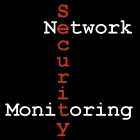Snort Evasion Vulnerability in Frag3

I saw this Snort news item reporting a "potential evasion in Snort." This should have been listed in the release notes for 2.8.1, which is said to fix the problem. I found the original iDefense Labs advisory which credits Silvio Cesare , who probably sold the vulnerability to iDefense Labs. From the advisory: Snort does not properly reassemble fragmented IP packets. When receiving incoming fragments, Snort checks the Time To Live (TTL) value of the fragment, and compares it to the TTL of the initial fragment. If the difference between the initial fragment and the following fragments is more than a configured amount [5], the fragments will be silently discard[ed]. This results in valid traffic not being examined and/or filtered by Snort... Exploitation of this vulnerability allows an attacker to bypass all Snort rules. In order to exploit this vulnerability, an attacker would have to fragment IP packets destined for a targeted host, ensuring that the TTL difference is gr











